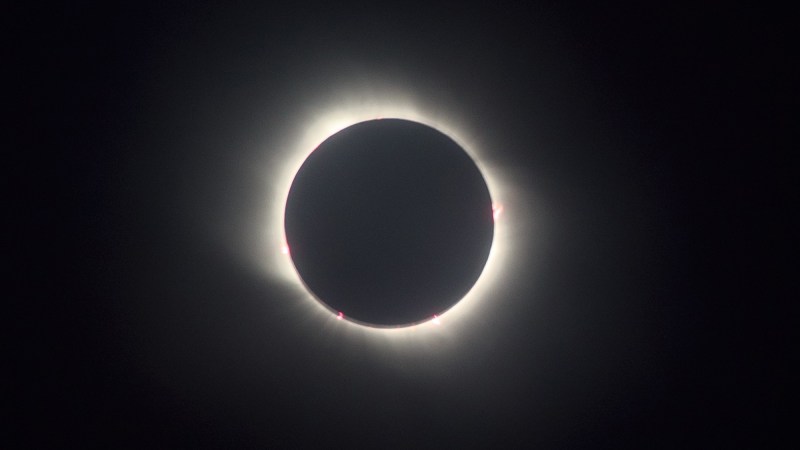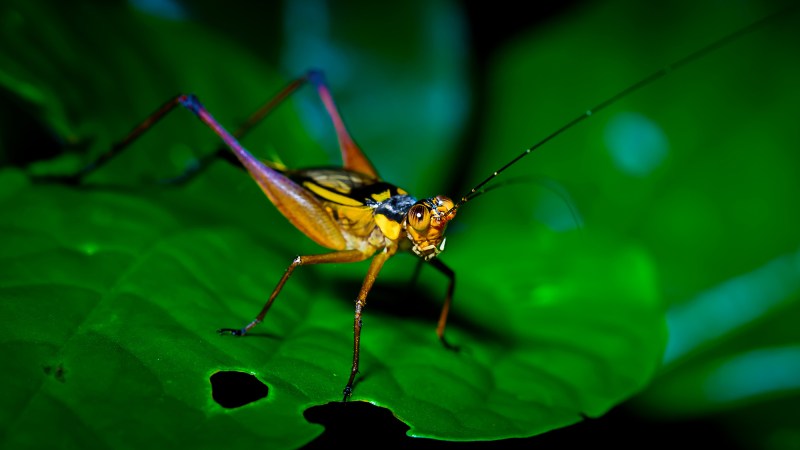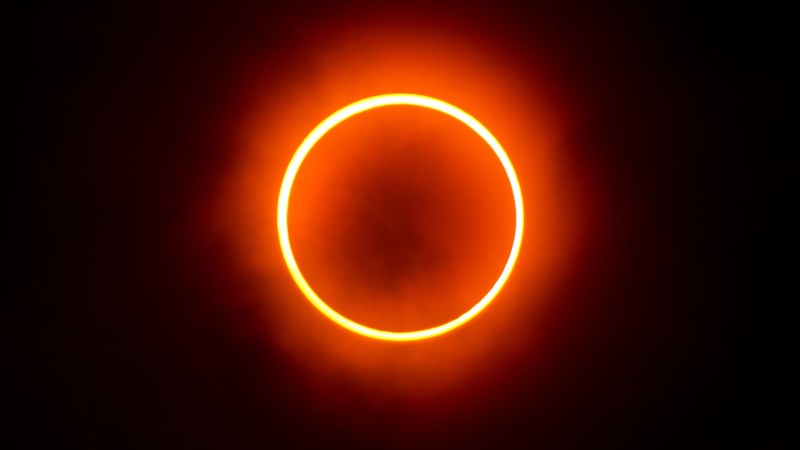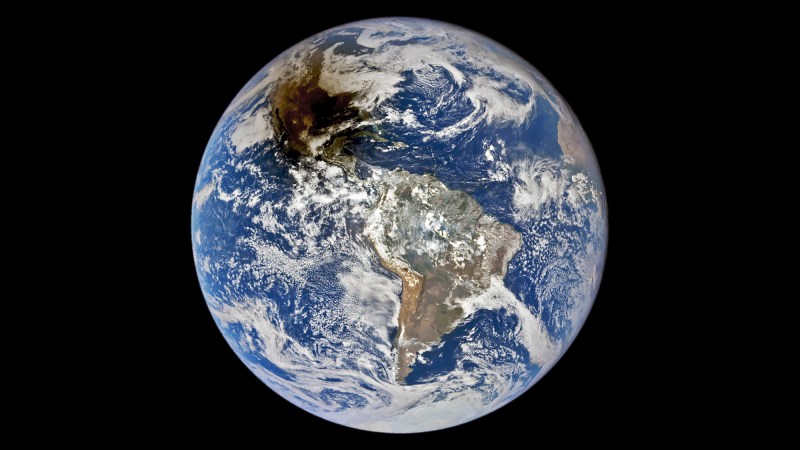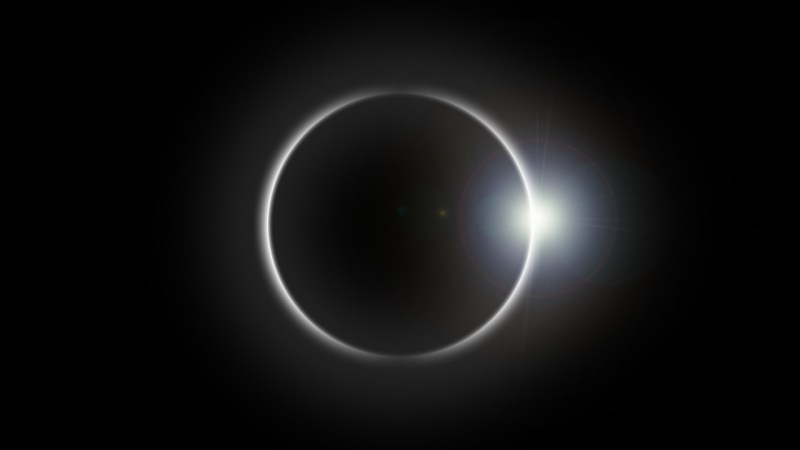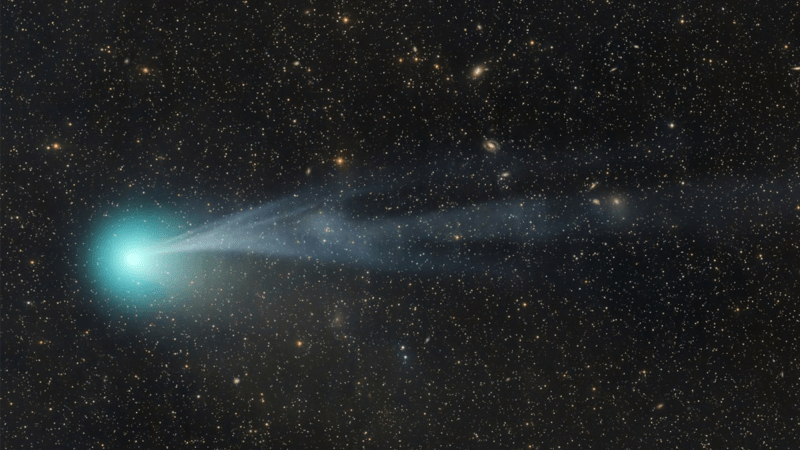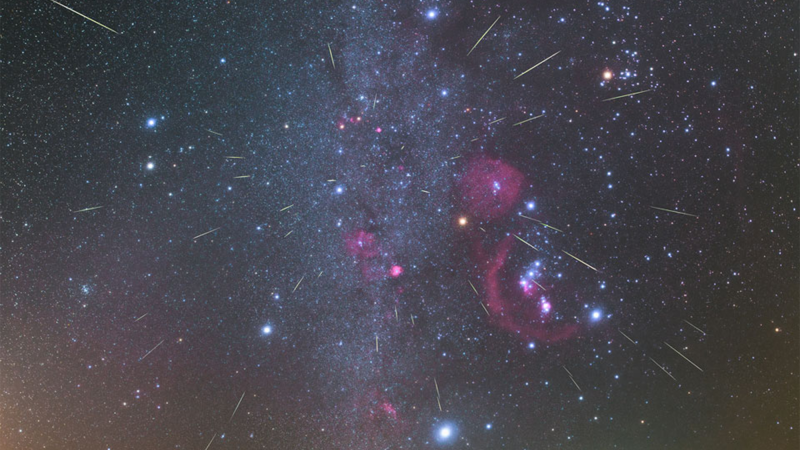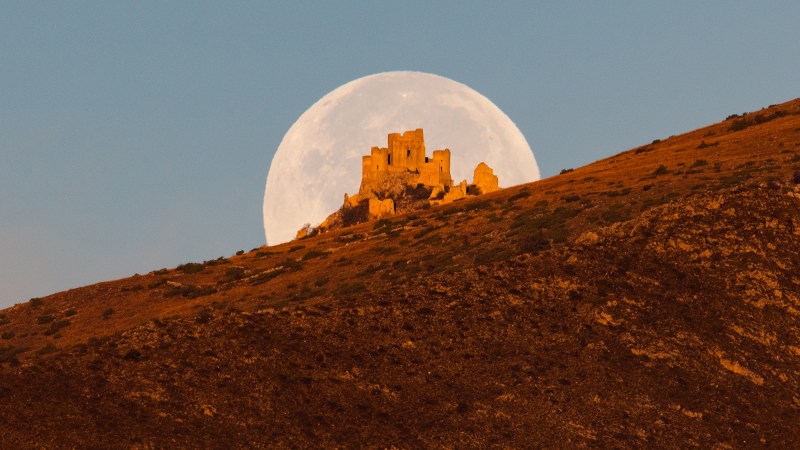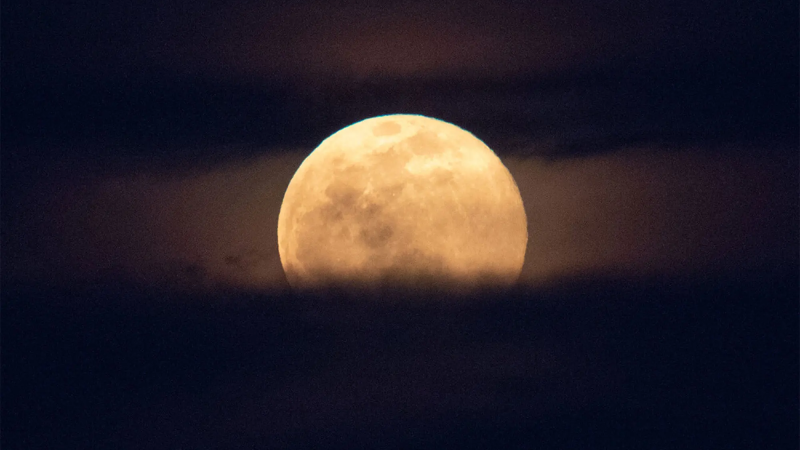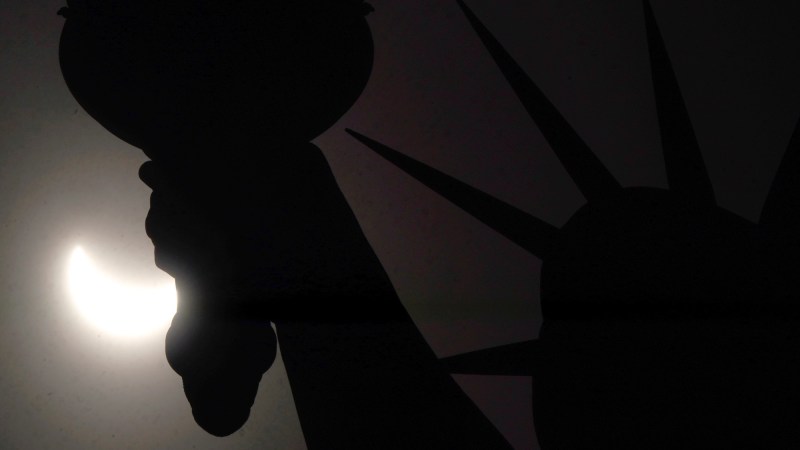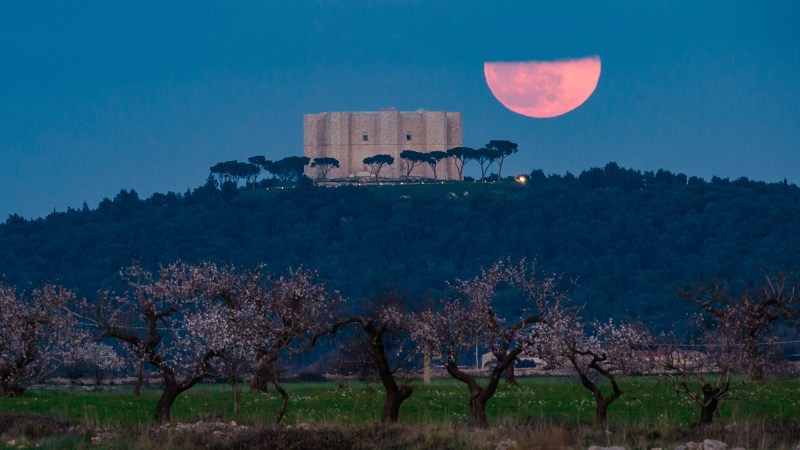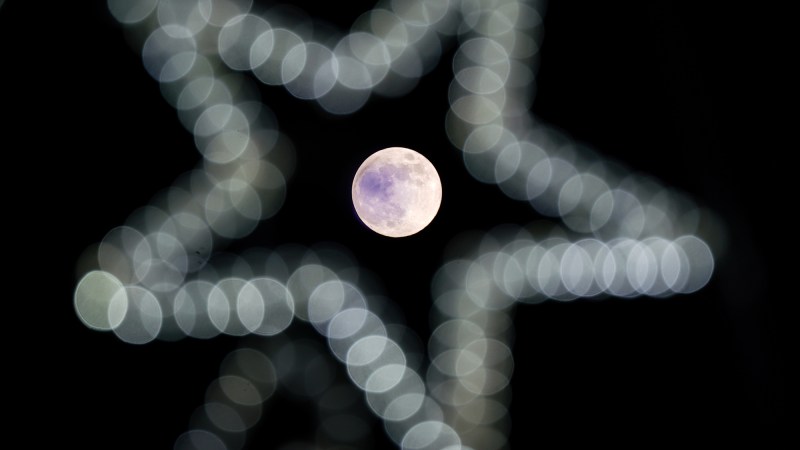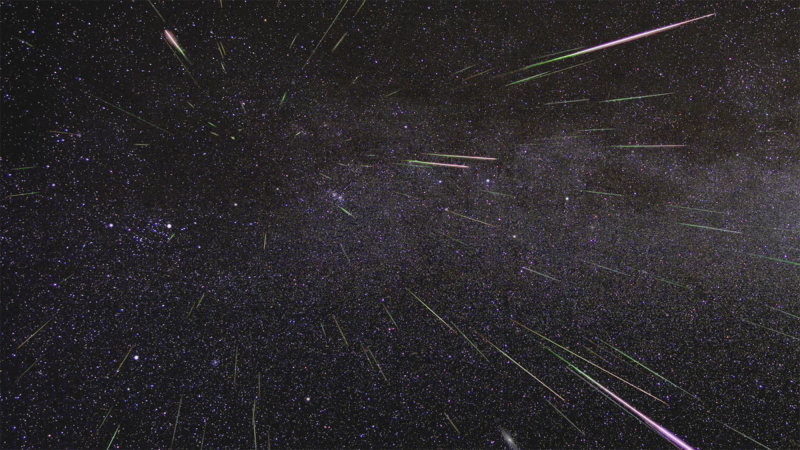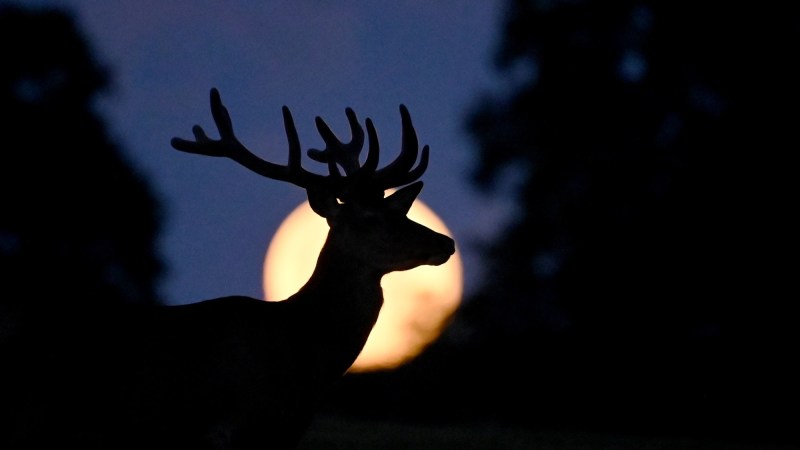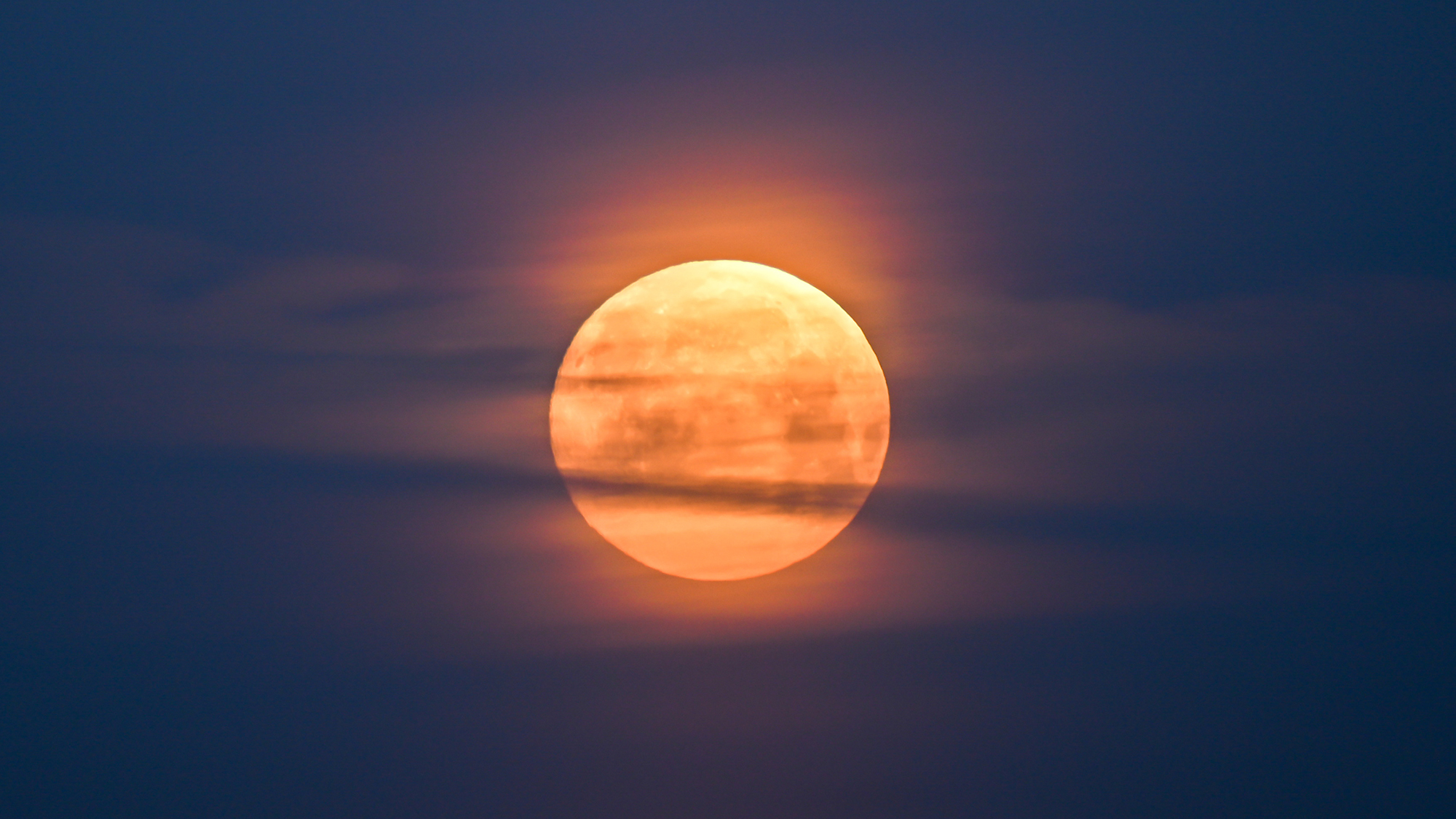

| April 8 | Total Solar Eclipse |
| April 21 | Comet 12P/Pons-Brooks Reaches Perihelion |
| April 21 through 23 | Lyrids Meteor Shower Predicted Peak |
| April 23 | Full Pink Moon |
Millions across Canada, the United States, and Mexico are getting ready for this month’s big total solar eclipse. However, this exciting celestial event is not the only thing to get pumped about this Global Astronomy Month. April will bring in another possible chance to see the “Devil Comet” and a meteor shower.
[ Related: This is the most cosmically perfect time in history ]
April 8-Total Solar Eclipse
In North America, the moon will pass between the sun and Earth, completely blocking the face of the sun. According to NASA, the sky will darken as if it were dawn or dusk in the areas where the moon blocks out the sun’s light. Torreón, Mexico will see the longest totality at 4 minutes and 28 seconds, while most places along the path of totality will see it last between 3.5 and four minutes.
The first location in continental North America that will experience totality is the Pacific Coast of Mexico, at about 11:07 am PDT. The path of the eclipse will then enter the United States in Texas, and travel through Oklahoma, Arkansas, Missouri, Illinois, Kentucky, Indiana, Ohio, Pennsylvania, New York, Vermont, New Hampshire, and Maine. It will enter Canada via Southern Ontario, and continue through Quebec, New Brunswick, Prince Edward Island, and Nova Scotia. The eclipse will leave continental North America on the Atlantic coast of Newfoundland, Canada, at 5:16 p.m. NDT.

It is incredibly important to not look directly in the sun without proper eye protection during the eclipse. You can also build your own eclipse glasses and pinhole camera to watch this incredible event without frying your eyeballs. Aspiring astrophotographers are also encouraged to try to photograph the event and you can learn how to do so safely with this NASA-approved guide.
[Related: How to make sure your eclipse glasses actually work.]
April 21- Comet 12P/Pons-Brooks Reaches Perihelion
The “Devil Comet” put on a show in the Northern Hemisphere in March, and could even photobomb this month’s eclipse. On April 21, it will reach its closest point to the sun. During this time, it may be visible to the naked eye if the sky is dark enough. As it moves from the constellation Aries to Taurus, it will also become visible from the Southern Hemisphere. For the best spots to try to catch a glimpse of Pons-Brooks, consult StarWalk.
After June, Pons-Brooks will take another 71 years for it to complete a full circuit around the sun. It won’t be visible again until summer 2095, so this will likely be the last time most of us get to see it.
April 21 through 23- Lyrids Meteor Shower Predicted Peak
The annual Lyrids meteor shower officially begins on April 15 and is predicted to peak beginning in the early evening hours of April 21. Unfortunately, this year’s shower will be impacted by a bright waxing gibbous moon, making the night sky a bit brighter. In a dark sky with no moon 10 to 15 meteors per hour can be expected, so this year’s may be a little bit low. However, the Lyrids are known for some rare surges in activity that can sometimes bring them up to 100 per hour. The meteor shower will be visible from both the Northern and Southern hemispheres, but is much more active in the north.
[Related: The moon is shrinking (very slowly).]
April 23- Full Pink Moon
The first full moon of spring in the Northern Hemisphere will reach peak illumination at 7:49 pm EDT on April 23. You can use the Farmer’s Almanac to calculate the local moonrise and moonset times near you. For best viewing, watch as the moon rises just above the horizon.
April’s full moon is often called the pink moon in reference to the early springtime blooms of the wildflower Phlox subulata found in eastern North America, so it will not take on a pink hue. The April full moon is also called the Loon Moon or Maango-giizis in Anishinaabemowin (Ojibwe), the It’s Thundering Moon or Wasakayutese in Oneida, and the Planting Moon or O’nót’ah in Seneca.
The same skygazing rules that apply to pretty much all space-watching activities are key during the nighttime events this month: Go to a dark spot away from the lights of a city or town and let the eyes adjust to the darkness for about a half an hour.

